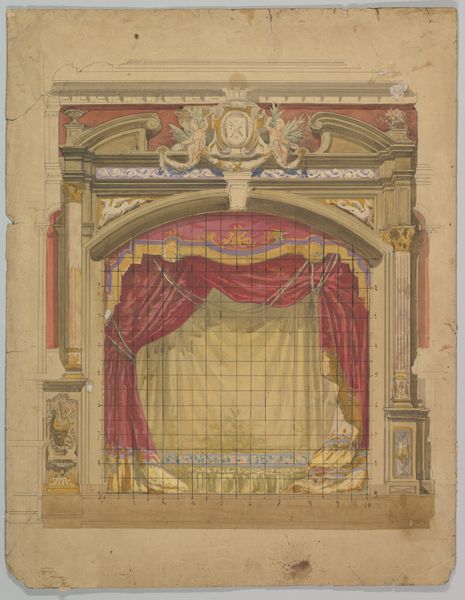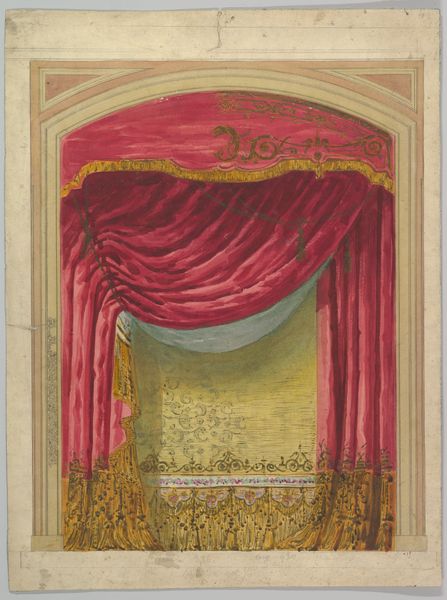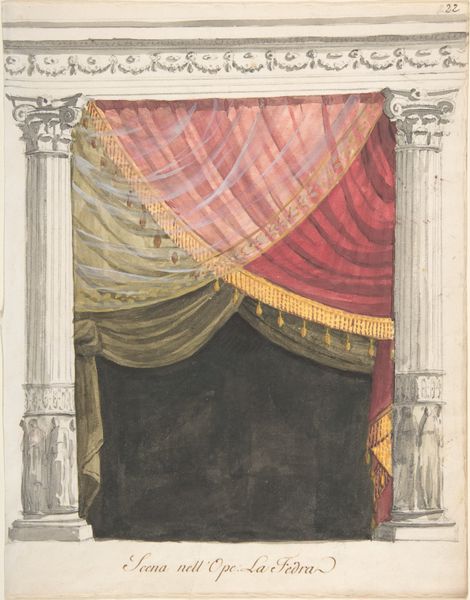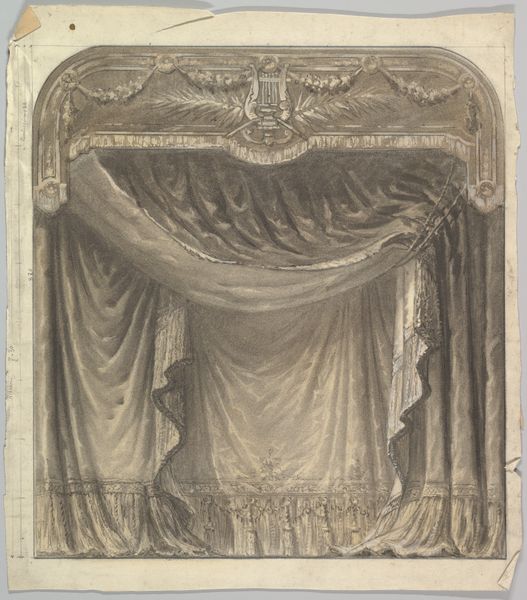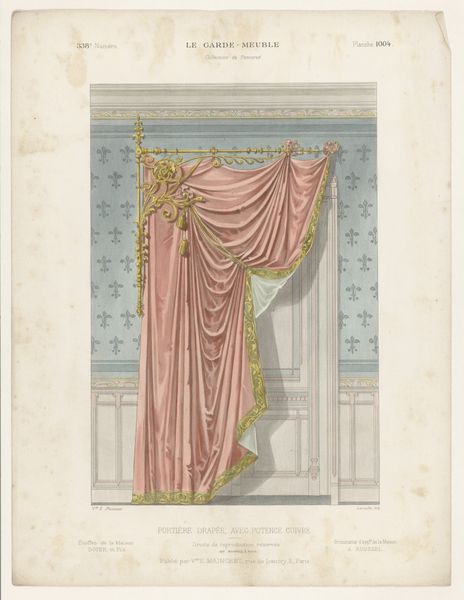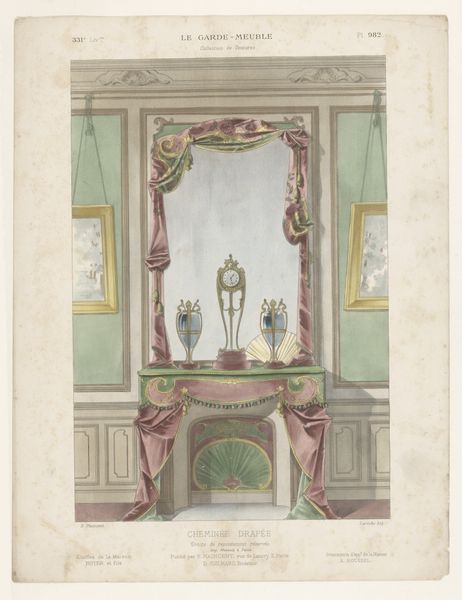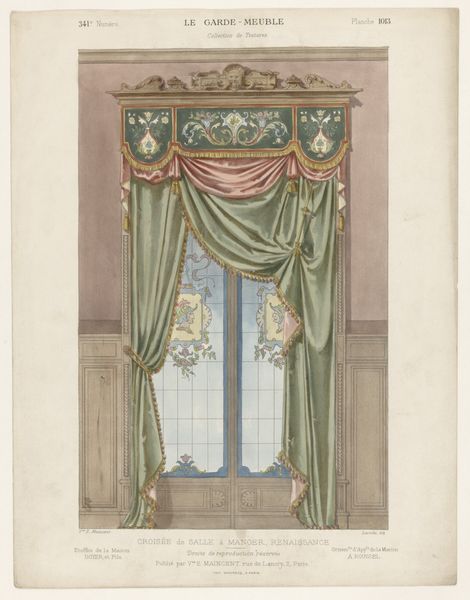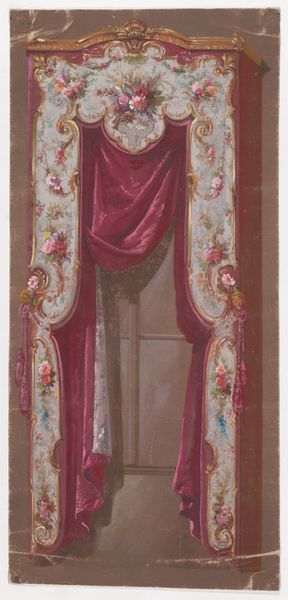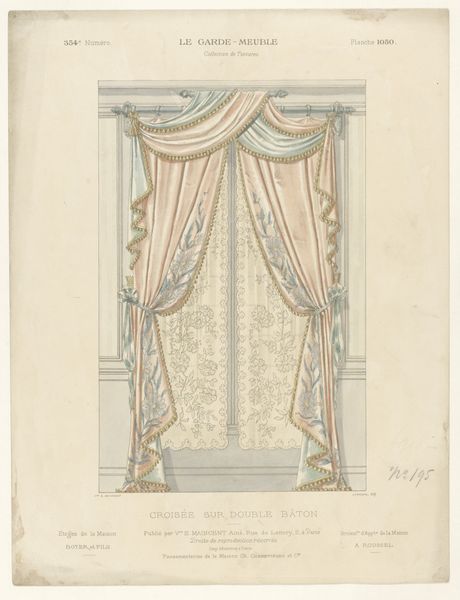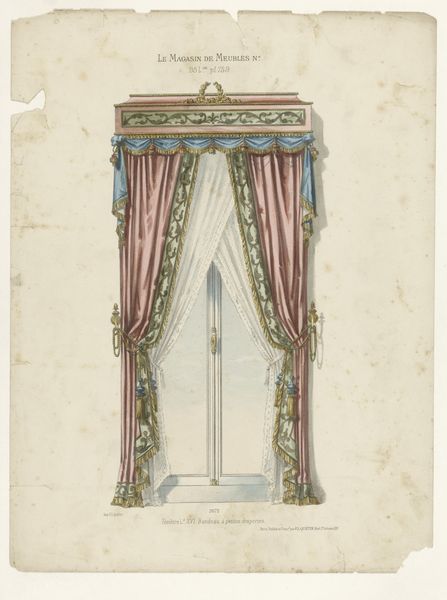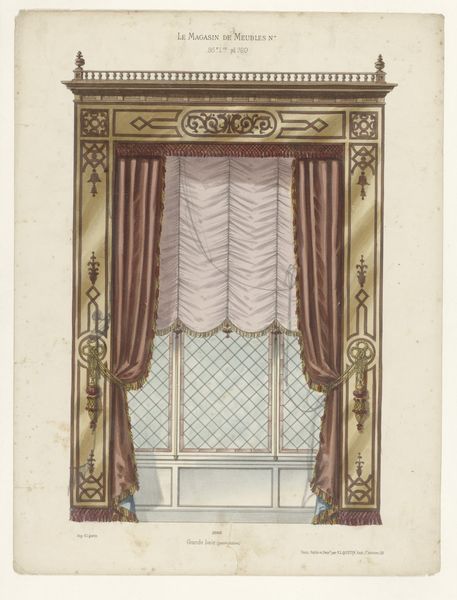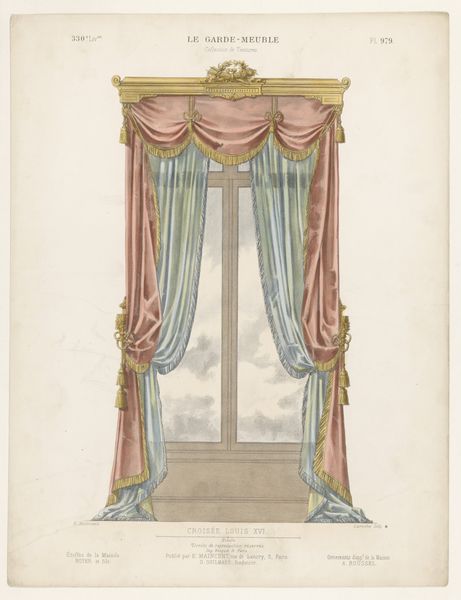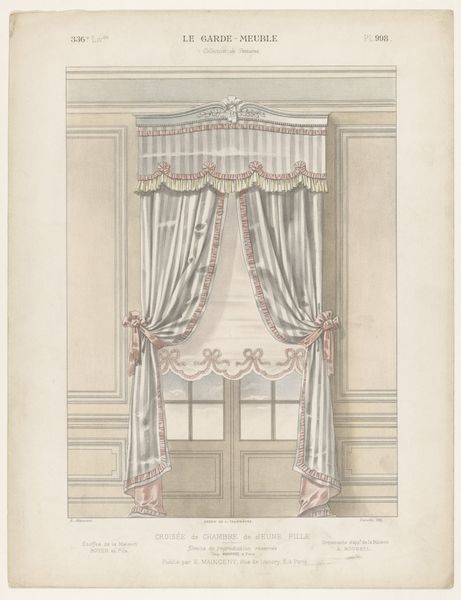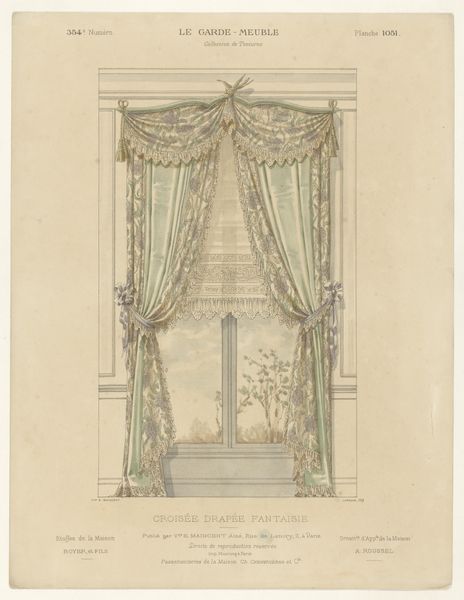
Copyright: Public Domain
Editor: This is Eugène Cicéri's "Design for a Stage Set," created sometime between 1830 and 1890, a watercolor drawing. It's so ornate! The deep reds and golds of the curtain create a sense of drama, but the faded quality mutes the impact somewhat. What strikes you about this design? Curator: I'm drawn to how this piece embodies the Romantic era's fascination with the theatrical. Consider, the 19th century was a time of immense social upheaval and shifting power structures. Stage design wasn’t just background, it was integral to shaping narratives and reflecting ideologies. What kind of narratives do you think a set like this might have been intended to support? Editor: I guess with the somewhat classical looking architecture, it seems like maybe historical dramas or even adaptations of Greek tragedies? Curator: Exactly! But it's not just about the aesthetic. The theatre was also a space where class anxieties were negotiated. The opulent design could both celebrate wealth and status and, potentially, critique it. Who was allowed on that stage, and who was in the audience, were deeply political questions. Does knowing this shift how you interpret the work at all? Editor: Definitely. I initially saw it as just a pretty drawing, but thinking about the social context makes it so much richer. The stage becomes a space where power dynamics are played out. Curator: And that is precisely why art history should always engage with contemporary theory. It forces us to examine not only what is seen, but who gets to see it, and what ideologies are being reinforced. Editor: That's such an interesting way to look at art. I never really considered stage design as having a political dimension. Curator: Everything is political, especially art. The design elements were intentionally used to evoke specific feelings and messages. This piece encourages me to examine who it served, and what social codes it helped solidify. Editor: I'll never look at a stage the same way again. Thanks for shedding some light on that!
Comments
No comments
Be the first to comment and join the conversation on the ultimate creative platform.
